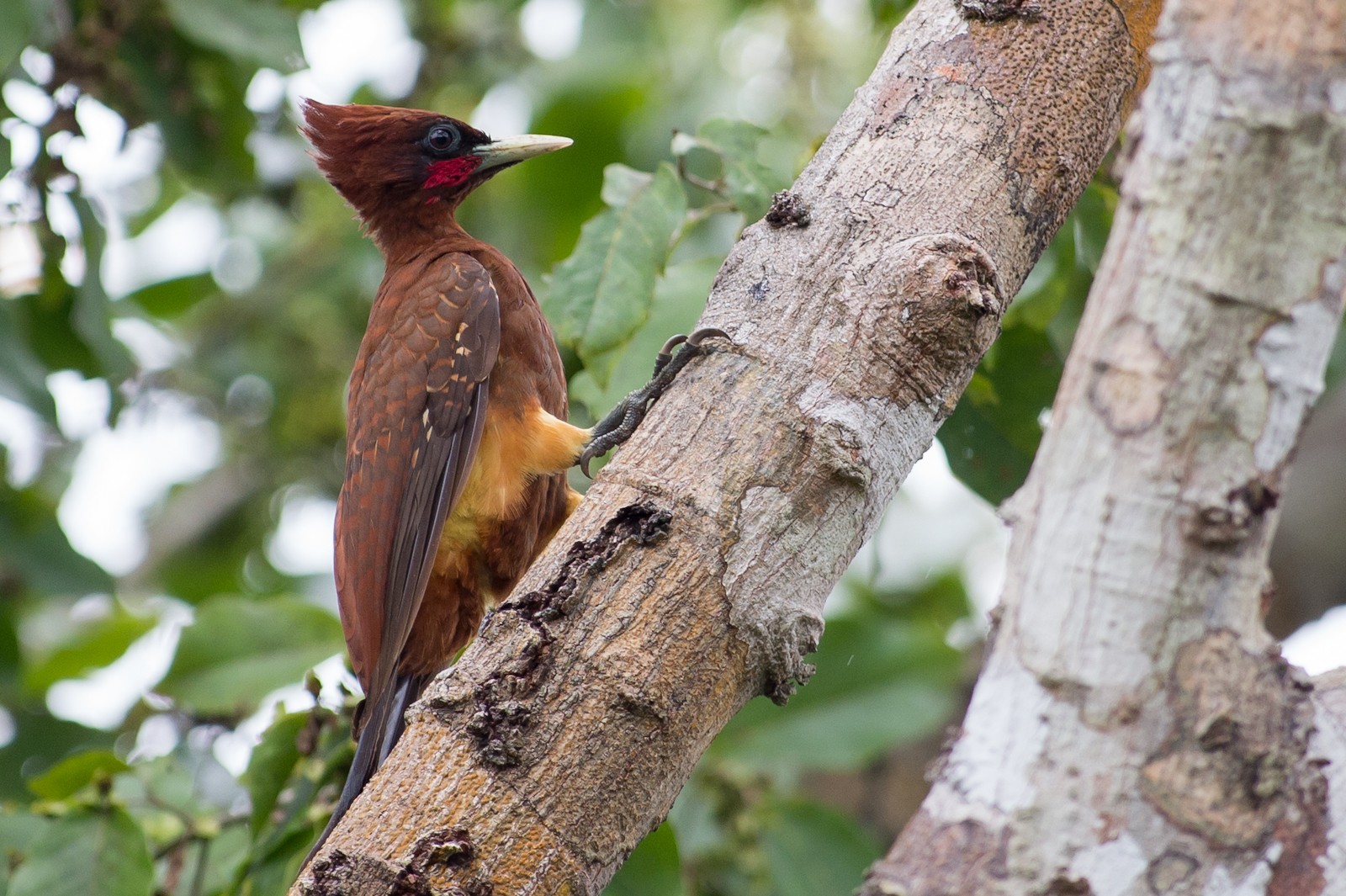Chestnut Woodpecker
A species of Neotropical Crested Woodpeckers Scientific name : Celeus elegans Genus : Neotropical Crested Woodpeckers
Chestnut Woodpecker, A species of Neotropical Crested Woodpeckers
Botanical name: Celeus elegans
Genus: Neotropical Crested Woodpeckers
Content
Description General Info
 Photo By https://www.flickr.com/photos/jquental/ , used under CC-BY-2.0 /Cropped and compressed from original
Photo By https://www.flickr.com/photos/jquental/ , used under CC-BY-2.0 /Cropped and compressed from original Description
The chestnut woodpecker (Celeus elegans) is a resident breeding bird in South America from Colombia, Venezuela and the Guianas south to Ecuador, Bolivia and northern and western Brazil, and on Trinidad. It is found in a range of habitat types including rainforest, gallery forest, seasonally flooded forest, mangrove woodland, swamps, plantations and wooded savannah. It is a generally uncommon bird, and threatened by habitat loss, but it has a very wide range, and the International Union for Conservation of Nature has assessed its conservation status as being of least concern. The chestnut woodpecker is about 28 cm (11 in) long and weighs about 127 g (4 oz). The upper parts, wings and breast are a rich unbarred chestnut brown, while the rump, belly, flanks and crest are yellow or cinnamon, depending on race. The tail is blackish, the legs are grey and the bill yellow-white. The male has a red malar stripe, but otherwise the sexes are similar. C. e. leotaudi of Trinidad is smaller, paler, and much brighter than the mainland forms. Other subspecies have differing crest colours. The habitat of this large woodpecker is forest and other closed woodland. The nest hole is in a dead tree, with the chamber floor up to 30 cm below the entrance. Three white eggs are laid. The chestnut woodpecker mainly feeds in trees and bushes on insects, including ants and termites, and some fruit. It sometimes breaks into termite mounds and follows swarms of insects; it forages in the middle and lower stories of the forest, sometimes in the company of other smaller birds. It is a noisy species with a harsh parrot-like squawk whEEjer. Both sexes drum. 
Size
32 cm
Nest Placement
Cavity
Feeding Habits
Chestnut Woodpecker primarily consumes ants, termites, dipteran larvae, fruits, and berries. It showcases unique foraging methods, often excavating trees and decaying wood to extract insects. These preferences and behaviors exhibit chestnut Woodpecker's adaptation to a diverse arboreal diet.
Habitat
Chestnut Woodpecker is typically found in a range of forest habitats, including tall dense forests, light forests, as well as humid terra firme. It also resides in gallery and várzea forests, often congregating around forest edges. This species can adapt to secondary habitats and is known to inhabit cocoa plantations. The bird predominantly occupies lowland regions, typically from sea level up to elevations of 500 meters, although they have been recorded at altitudes as high as 1100 meters in certain regions.
Dite type
Insectivorous
General Info
Feeding Habits
Bird food type

 Photo By https://www.flickr.com/photos/jquental/ , used under CC-BY-2.0 /Cropped and compressed from original
Photo By https://www.flickr.com/photos/jquental/ , used under CC-BY-2.0 /Cropped and compressed from original